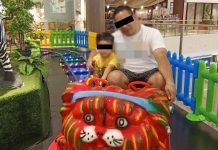
BY AIZA DELA CRUZ
MORE than a year out of school and no playmates of his age, my son coped during this pandemic by developing his self-care skills. We just played to our hearts content as if it was summer vacation all year round.
Developmental and behavioral pediatricians in a webinar “Your Child’s Amazing Brain: The First Five Years Learn to Play, Play to Learn Module” emphasized that play is one of the most effective ways to promote healthy brain development in children. That as little as 30 minutes of play can create positive changes in a child’s brain. Playful learning experiences are brain-building since they help in building memories, develop sociability, increase the chemical dopamine which is associated with pleasure, and decrease stress emotions in children.
Play is important, more so to an autistic, because it helps them make sense of the world and the things around them, as our son’s teachers and therapists always say. For autistic children, play helps in developing gross and motor skills, language and communication skills, thinking and problem-solving skills, and social skills (raisingchildren.net.au).
Doctors suggested that playful learning – free play, guided play, and games – should be encouraged in children. For play to be brain-building, as parents, we need to share the focus – that is observing them and looking at what they are doing; support and encourage – letting them lead their play and immerse in their interests; name it – describing what they are doing; take turns – playing with them by taking turns develops sharing and waiting, and practice endings and beginnings – that is having a story in the play or enacting a story. Through these, the child’s creative, social, cognitive, physical, and emotional aspects are developed. They became critical thinkers, they learn to collaborate with others, they communicate better, and they are more creative.
With my son, we use to play for him to learn. Here are some of the plays we usually do:
Bricks and lego – These toys became a way for my son to unleash his creativity. At first, he would only line them up and then stack them vertically. We had to teach him that he could do various things with them such as a house or a castle. Soon he learned to create things on his own. He would make animals, bridges, cars and trucks, flowers, and trees without following a pattern but based only on his imagination. These also became a language and communication tool for us. We would describe what he is doing and we would name the things he made. He learned to answer our questions and asks for our help.
Bike and scooter – My son has a lot of energy and he needs to be constantly stimulated. Having physical play through the bike and scooter helps him with balance, control, focus, and attention, aside from building stronger muscles. Having spent his excess energy on biking also helps him to have a good nap or sleep. Now, he would even do tricks or stunts with his bike and scooter or would enact a story he saw in video shows. He also learned to play with another child by playing with the scooter.
Bath and bubbles – When my son was learning to speak, the occupational therapist encouraged swimming and blowing bubbles. Blowing bubbles helped strengthen my son’s mouth and tongue muscles which helped him in saying words. It’s like training the mouth and tongue to have control and strength to be able to speak. Bathing is also a play for my son as he would enact nursery rhymes that involve bathing. It also developed his self-care on bathing.
Pretend toys and clay – My son and I would play with cooking sets, toolbox sets, doctor kits, and clay on almost a daily basis when he was three years old. I remember going into a toy store and my son cried over a specific cooking set. When we went home, he opened it excitedly and played with it happily. He imitated me when I would cook and even mumbled a story as he played. He named the things and play with them according to their intended use. With clay, we would mold them into different foods like ice cream, cakes, and apples. The pretend toys and clay helped my son understand things around him, such as why we cook food or go to the doctor. It also developed his social skills as he learned to wait, share, and take turns. It also helped build his vocabulary and communication skills.
Puzzles, and color and shape sorters – We introduced sorters to my son when he was a few months old. There is this cloth shape sorter with different colors and textures, and he would curiously play with it. Then we moved on to floor puzzles and he did well with them. He can sort and build the various puzzles mixed in together. These toys developed analytical, critical thinking, and problem-solving skills in my son. He would always try to solve his play problems rather than asking for help immediately, like stacking pillows on the floor beside the shelf to reach for the books he wanted or pushing the ottoman towards the shelf to reach for a toy.
There are many ways for children to learn and toys are tools to help them learn. Household items can also be toys. As parents, we have to be imaginative and creative like children to help them learn through play.
I enjoin everyone to have more compassion and understanding for all children with different abilities.
I would also like to hear the experiences of other parents who have children on the autism spectrum. You may email me at genevieveaiza.delacruz@gmail.com. I am a member of the Autism Society Philippines (ASP), a national non-profit organization dedicated to the well-being of persons on autism spectrum disorder./PN



